I’ve had a lot of people ask me to do a review of my David 2 by Louet floor loom.
This post is not sponsored or endorsed by Louet, it’s just an honest review for your own information or research.
I have written about this loom and floor looms in general before, and also about what to expect when your loom arrives, but this article gets into the specifics of the Louet David.
If you purchase a new David in 2024 or after, you will be buying the David 3, not the David 2. The David 2 has been retired. But this is still a very useful review as there are only a couple of minor differences between the 2 and 3.
If you are purchasing a used David, it may well be a David 2 and would be exactly like my floor loom.
I must admit that when I was looking for a floor loom to purchase it was kind of hard to get information on this particular loom. All I really had to go on was a little amount of information on the Louet website.
*This post contains affiliate links. Please see my disclosure policy for further information.
I knew that I wanted something compact enough to fit in the smaller space I had available and due to my lack of experience with floor looms at the time, I wasn’t confident that a second hand, possible fixer upper would be a sensible choice.
One of the reasons that I was interested in the David is because I live in Australia and there are somewhat limited choices when it comes to looms and most have to be custom ordered and imported.
The Schacht Baby Wolf was a very strong contender in my decision making because it was more familiar to me and it was easier to find information on it.
To further complicate the issue, I had never woven on a floor loom (true story!)
Through a good deal of googling, I had found an agent in Sydney who could order a David for me. Not only that, she and her husband delivered the loom in person and brought it into my home, even though they are from another state! Amazing customer service!
I will be going over the loom discussing a few different features and then giving you my opinions on the positives and negatives. There are not many negatives, but maybe the things that I’d like you to think about if you’re considering purchasing the same loom.
The first thing that I do love about this loom is the compact size. I’ve had it in a couple of different positions in my studio, and it’s easy to move and fits a variety of spaces. The weaving width is 90cm (35″) which is a good width for many different projects.
You need a certain amount of space at the front and back of the loom for warping – I think a 1 metre clearance at the front and back of the loom is optimal. You can get away with less, but it may be a little cramped.
The next thing I love about this loom is the quality of make. I can’t fault the quality at all, from the wood, the finishing to all of the pieces that go with it, it’s just beautiful quality and design.
My husband actually put it together for me – I’ll admit that because my brain is not very wired for putting things together and following set written instructions, but my husband is very good at that. He didn’t have any trouble following the directions. It did take quite a few hours to put together, but that is to be expected with a loom of this size and type.
The David loom comes with texsolv heddles and cords. I personally really love texsolv as it is so light and quiet. Metal heddles can be heavy and noisy, but this is a personal preference and not to suggest that one is better than the other.
Treadling on the David is very light and easy. It is not the least bit clunky when treadling because of the spring system and it’s easy on your body. Speaking of treadling, I like the texsolv tie up system which is simple to learn to use and quite quick to tie up. There is no real “tying” up, you just pop the texsolv cord holes over the treadle screw heads and away you go. The texsolv cording is strong so you don’t have to worry about breakage while treadling.
The David has a gliding beater, meaning that your beater is positioned on metal rods. It “glides” back and forth on the rods, so it is level and steady. I’ll admit that it took me a bit of getting used to. The Ashford table loom I had been weaving on previously had an overhead beater, which is loose and swinging.
The gliding beater is not as easy to use in some ways, as it is rigid and set on the tracks of the metal rods. Now that I’ve been using it for a number of years, I am used to it and have found ways to weave most effectively with it. I do think that once you’re accustomed to it, it does result overall in a more even beat.
One thing that really helped was using a small amount of lubrication on the rods. I couldn’t find much information on whether or not this was a good idea, but to me the beater was feeling quite stiff and not so enjoyable to weave with.
So, I applied a very small amount of lubricant with a dry, clean rag. The difference was amazing! I now usually lubricate between projects. The beater now really does feel like it’s gliding. Just be sure to use a non silicon lubricant that won’t build up a residue on the metal rods. I use the Australian made Inox lubricant spray.
Always apply the lubricant to the rag, not directly to the metal.
Another way to work successfully with the gliding beater is to find the right warp tension. Too tight and the beater doesn’t glide as well. Just like on any loom, there is a sweet spot for tension that you discover through experience. I am careful when I advance my warp to advance to the spot that feels right for me – not too far towards the front beam or, once again, the beater will struggle and the look of your weaving will suffer.
I advance in small increments and adjust gently towards a firm tension. I hope that makes sense!
This loom came with a 10 dent reed. I haven’t purchased another reed at this point due to the expense and lack of space to be able to store yet another piece of weaving equipment. When I need to use a different sett, I just adjust the number of threads in my reed to accommodate. I very often weave at 20 epi, so I simply double my ends in the reed.
The reed and beater are removable for warping and threading, as is the front breast beam. This is really handy when you get to the threading stage, as you can get in really close to the heddles to thread which saves my back from days of pain afterwards!
One feature that I’ve found particularly great is the ability to put add or remove heddles to the shafts after warping. With my table loom I have to collapse the castle (the upright part of the loom) and tilt it in order to adjust heddle numbers. Not so practical.
On the David, if I have miscalculated the heddles for my project and I need a few extra all I have to do is unhook the texsolv cords on the top and bottom of the shaft, slide the new heddles on and hook the cords back on.
Another feature I particularly like about this loom is the friction brake. I can be weaving away and when I’m ready to advance my warp all I have to do is lean over the side and pull up the friction brake to release the warp tension. Then I use a handle also on the right hand side to advance my warp forwards.
Louet looms have a built in raddle, which is a unique feature. It means that instead of taking your warp off the warping board and then taking it to a table to lay into a raddle, then tying the raddle onto the loom to begin warping, you just take the warp from the warping board directly to the loom. When you wind on the warp, you can then tension the warp over the top of the loom, which can be quite handy if you are using weights to assist with tensioning.
I usually have to break up my time placing threads in the raddle, as standing for a longer amount of time wreaks havoc on my back!
I hope to eventually purchase a sectional warp beam for my David, as I prefer to warp floor looms with my Sawyer Bee Warping Square.
You receive a pair of lease sticks and some wooden separator sticks with the loom. I have devised my own methods for using the lease sticks, as initially I found it way too fiddle trying to deal with the sticks while warping and threading. I didn’t have the extra pair of hands to hold the sticks steady, so I now use stretchy bands (like the Ashford bands that they call “helping hands”) and these make a huge difference. I also like to use metal rings that open and close through the holes in the ends of the sticks to help keep them together and hold them steady.
I use the wooden warp separators mostly at the front of the loom as I advance my warp. At the back I use a roll of brown craft paper which does an excellent job.
I feel that I have a new appreciation for my David loom since purchasing a much larger floor loom. The David is simple to dress and weave on and so light to treadle.
Those are all the basics of the loom, I could definitely talk about other features but this article is already getting long!
Now, you may be wondering what the cost of this loom is?
Bear in mind that I bought this loom a number of years ago now and inflation is crazy.
At the time of purchase, my loom cost around $4000AUD. That included the cost of importing. That price does not include the extras I needed such as boat shuttles, extra heddles, weaving bench etc.
There are also optional extras available like an extra cloth beam (for longer warps), sectional beam and a Louet weaving bench. I don’t have any of these. I use a piano stool as a weaving bench, it’s much more affordable.
Revolution Fibers in the US list a current price from $4,770USD (at the time of writing this article).
In Australia, you can purchase from Thread Collective at a current price of $6,780AUD.
These prices don’t include shipping and can vary according to the rise and fall of the Australian dollar.
If you would like to know even more about this loom, I have a number of videos that will interest you.
This is my first video review of the Louet David which I filmed a few years ago. You get to see the parts of the loom, although some of the information is different to this article as my opinions may have changed over time:
I also have a demonstration to show how quiet this loom is:
And a fun little video that I made not too long after I purchased the loom. It’s nice for me to look back and see how much faster I weave now!
I hope this article has been informative and interesting for you! If you have any questions, please leave a comment below, I love to hear from you 😊
Until next time…
Happy Weaving!

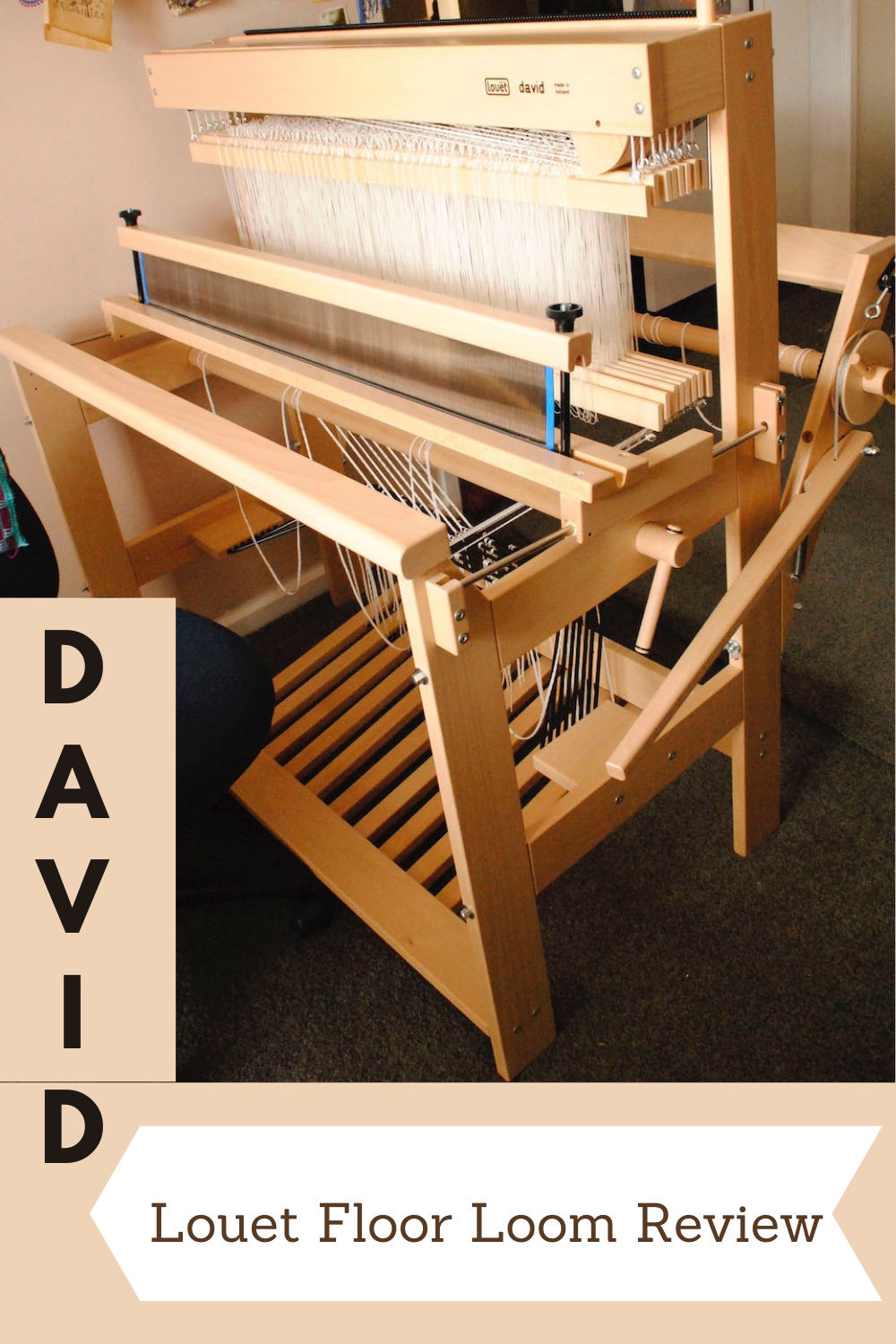

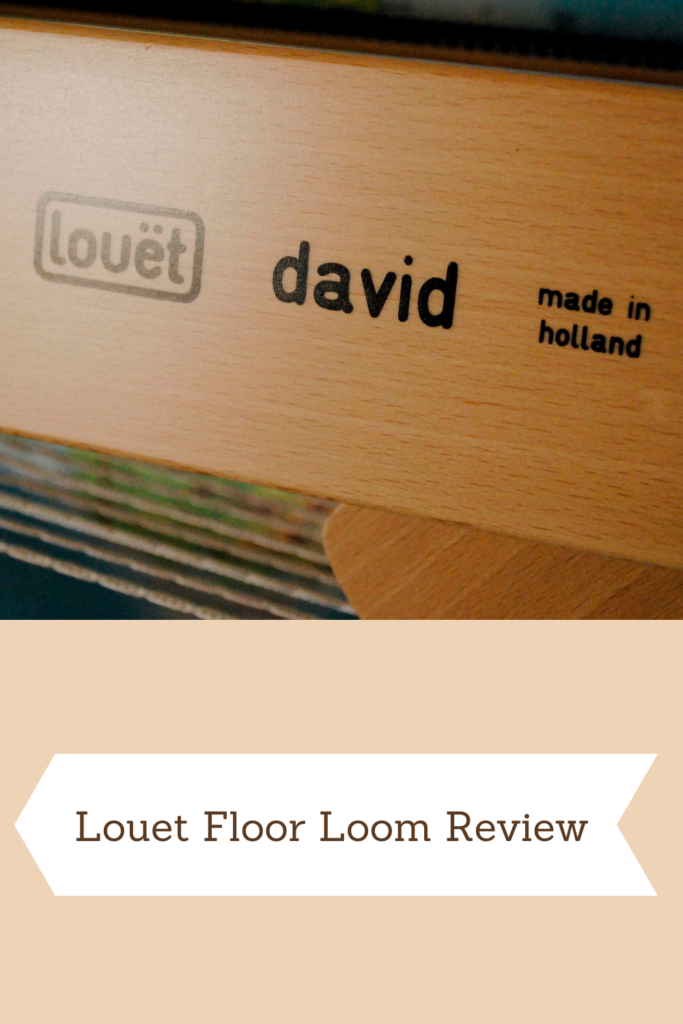
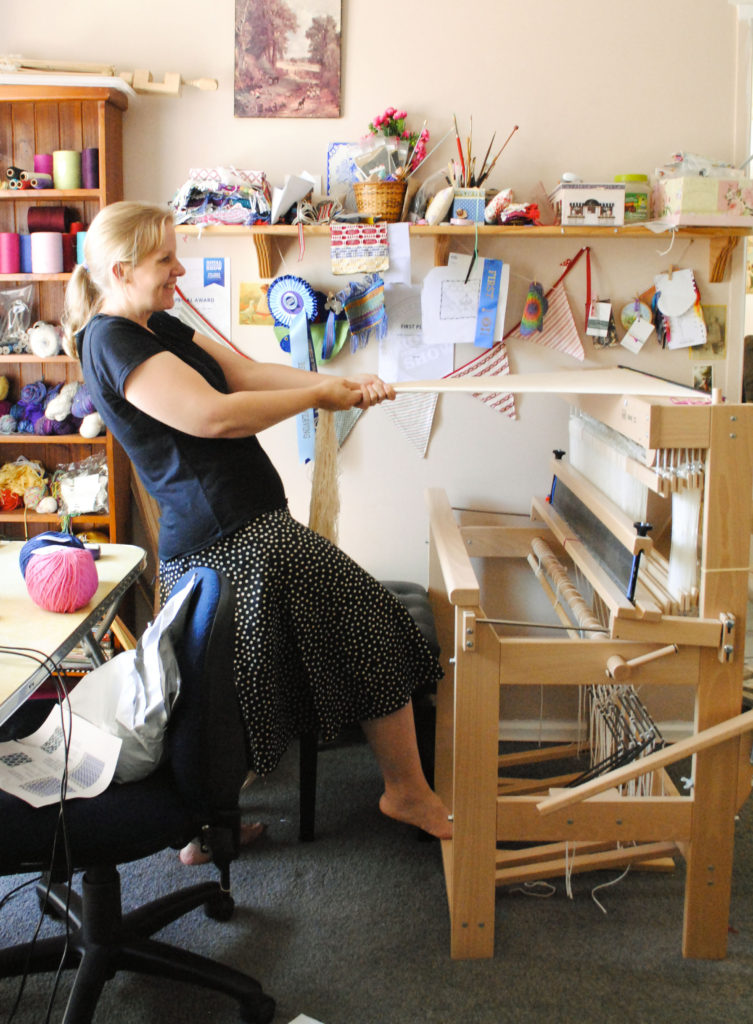

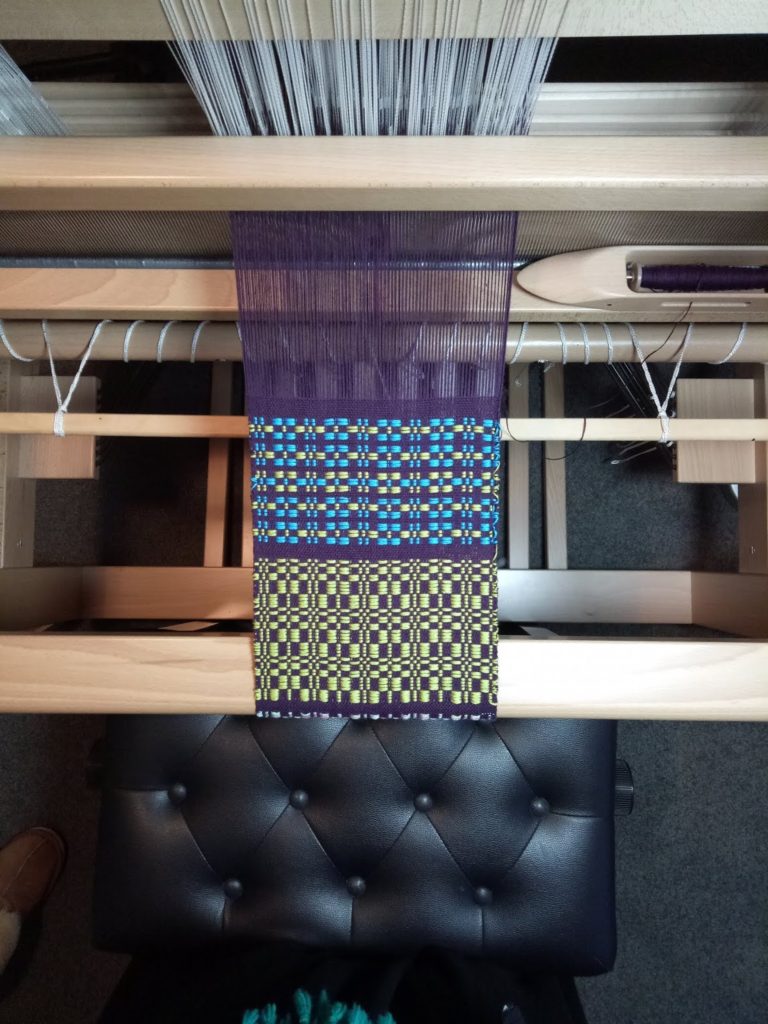
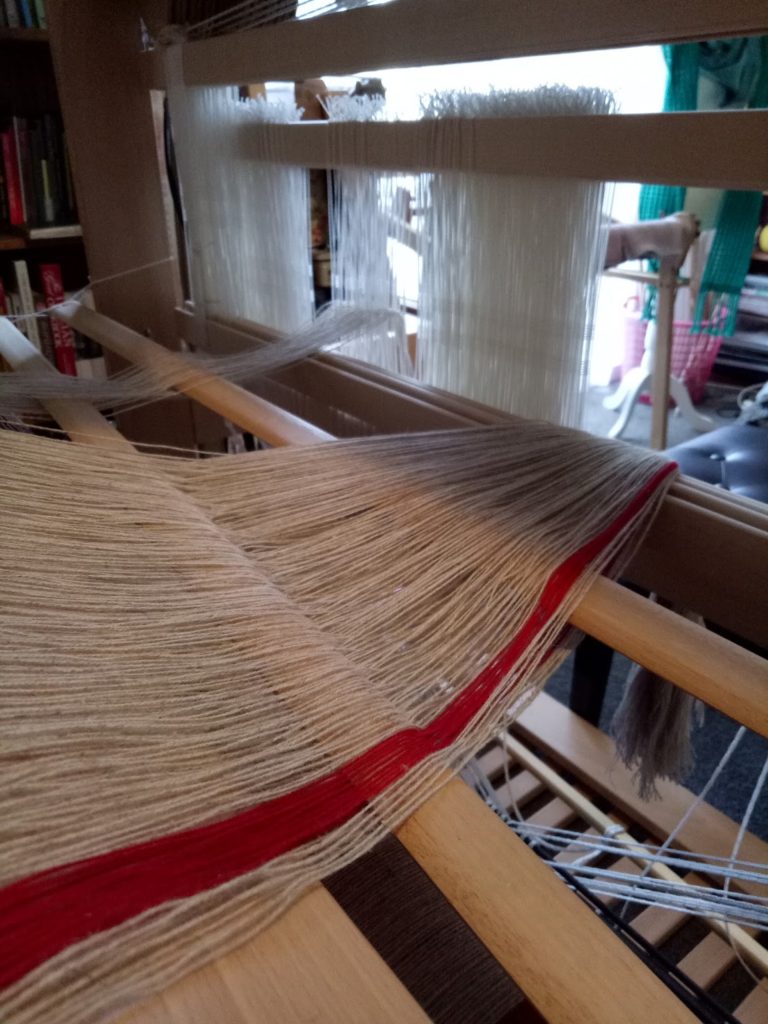
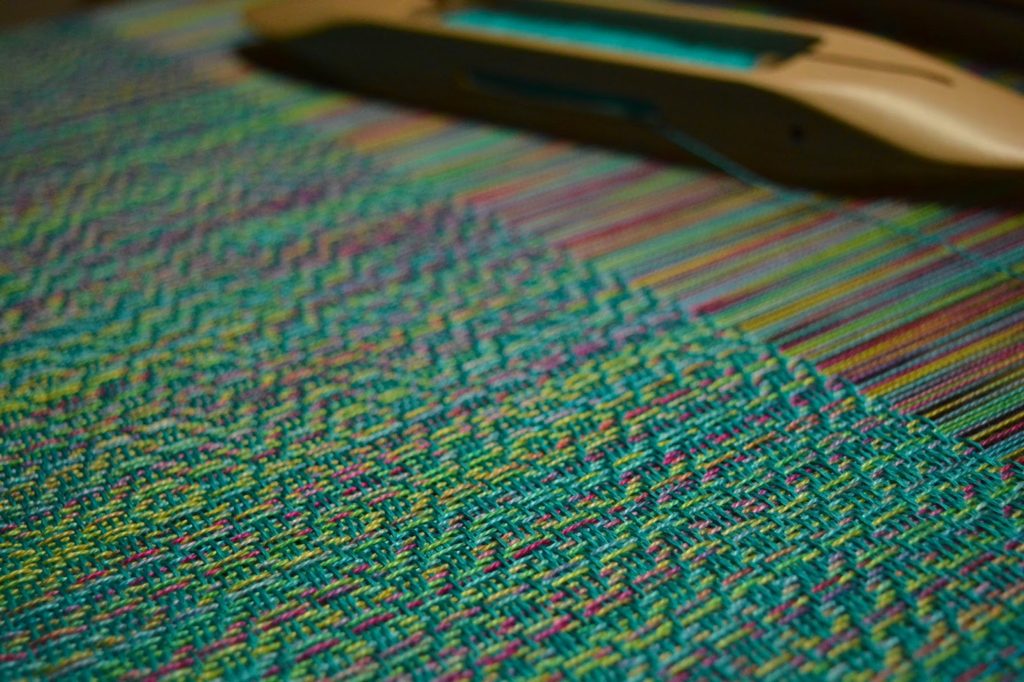
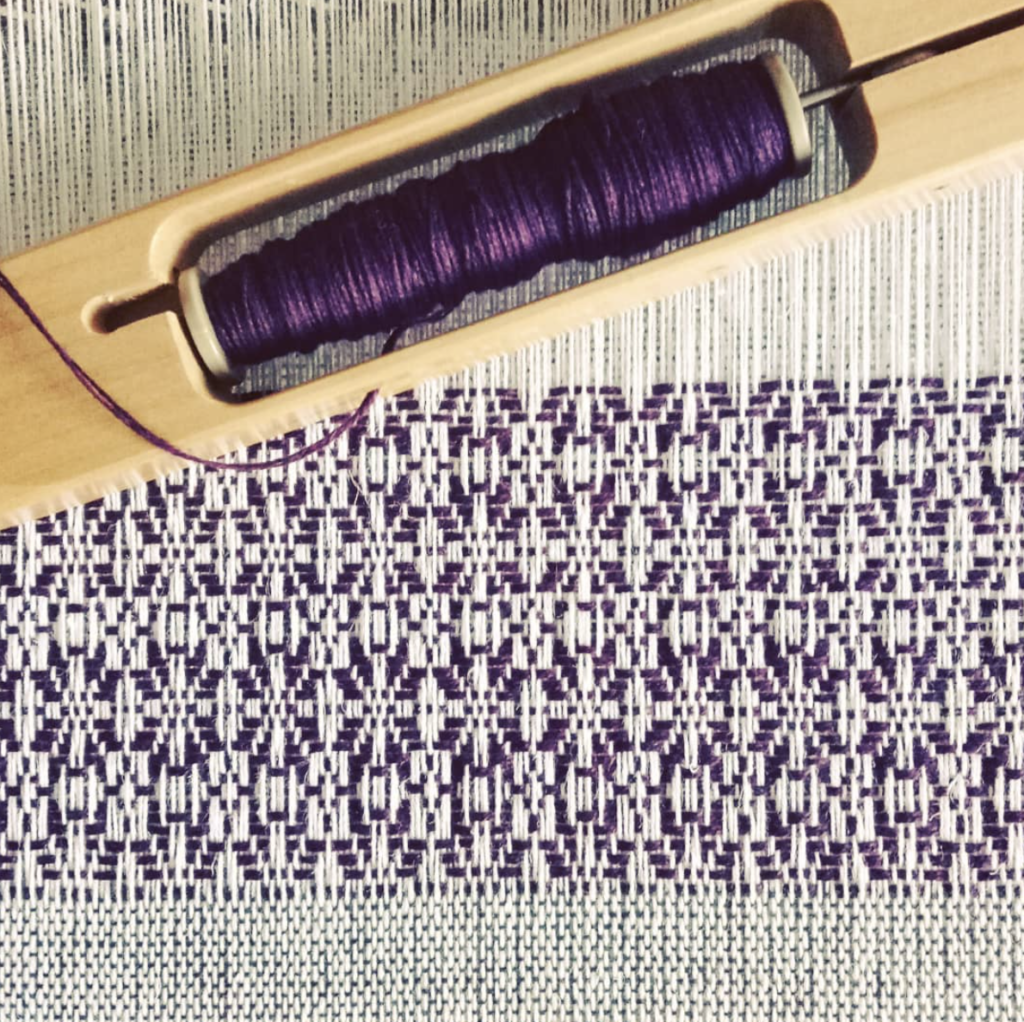
Hi Kelly. I’ve enjoyed your informative weaving loom videos. I am in Canada and considering the Ashford Floor Loom. I’d be interested in knowing if you considered the Ashford before deciding on the Louet David, especially considering your proximity to New Zealand. Were there particular features of the Ashford you found not so suitable or with less ease of operation?
Thank you for any comments you may wish to share.
Hi Kathleen, When I bought my David, the Ashford 8 shaft was not available. It has only been made available again in the past couple of years. If it was around at the time I bought my first floor loom, it would have been a big contender in my decision!
Hi Kelly – I have just placed an order for the smaller David loom. Your posts and videos have been so helpful and guided me towards my decision. Thanks for being such a great resource ☺️
Hi. How many heddles doi you have on each shaft. Also when the back is folded in how deepl is the loom. Cant find it asnyywhere, and might need toi get through a doirway.
Thanks
It comes with some heddles (I can’t remember, but maybe 100 per shaft) – it won’t be long before you want more, so you may want to order additional ones. I believe the depth is around 27″.
I just watched your vid. On the negative people out there who chose to vent on you. Gosh I’m sorry this has happened. I am taking your classes and have enjoyed your video lessons, and Utube videos. I am a beginning weaver ,and I’m afraid I’m hooked. Both the process and results are fascinating. I never realized how beautiful finished projects can be. Thank you for your classes ,clear instructions, and prompt answers to questions. Hang in there and keep in mind that negativity attracts negativity, And the universe gives you what you ask for everything. So those folks are working out some karma for sure. Thanks again, Joyce
P.S. every one in my family are getting crooked towels, and odd looking scarves, for Xmas.HAA HAA!
Thank you Joyce ❤️
Thank you for reading Gai! 😊
I appreciated the article. I am waiting on my 35” David loom to arrive. I debated between the Spring and the David but opted for what seems an easier tie-up and smaller size. I sold a 32” 4 shaft upgradeable Ashford table loom that was evidently too old to buy the additional shafts for now to help pay for and make room for the David. Your article relived my mind about the choice. One person I talked to said the tie-up on the David requires that it be done backward from the tie-up drafts. Have you found this to be so? Enjoy very much your classes the the help they afford me on all my looms.
The David is a sinking shed loom, and a lot of weaving drafts will have a tie up for rising shed looms.
A rising shed draft is often indicated with a circle, a sinking shed with an “x”. Not always – it depends on the draft!
If you use a rising shed tie up on a sinking shed loom, the pattern will weave on the underside of the cloth.
The easy way around this is if you have a rising shed draft, tie up the empty boxes rather than the filled boxes.
Does that make sense?
Thank you for the reply. Yes it does and will make better sense once I start working with it I am sure.. Hope it arrives soon. So anxious to get going.
Looks like you made a great choice for your floor loom. Though I’ll never be a floor loom weaver, I found this interesting – love learning about new (to me) things.